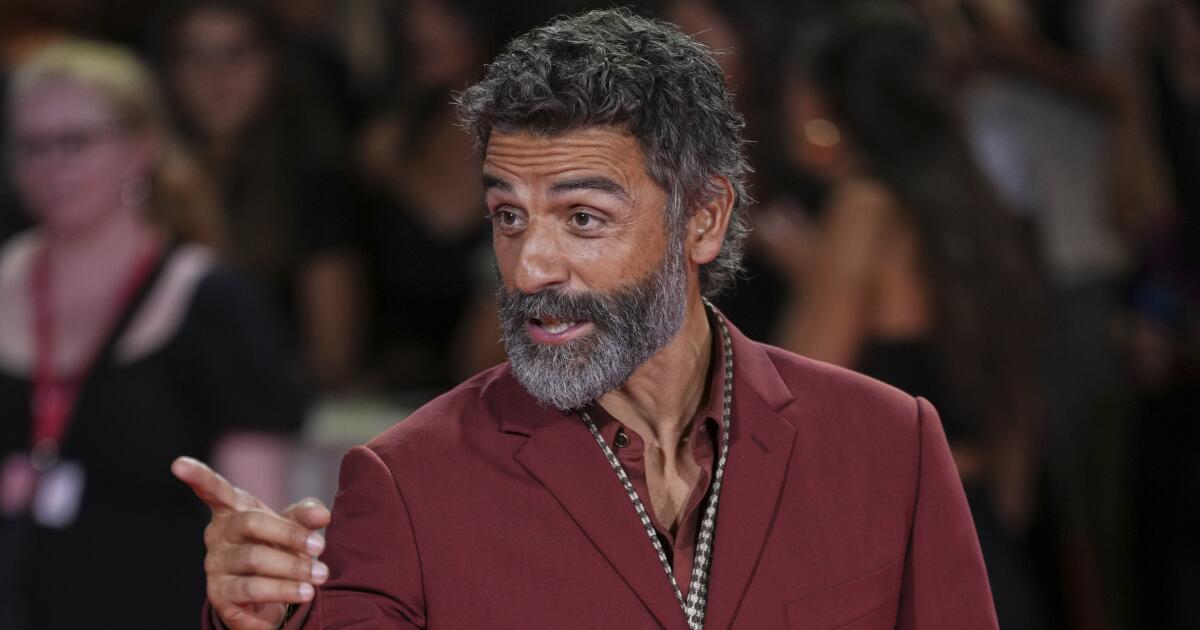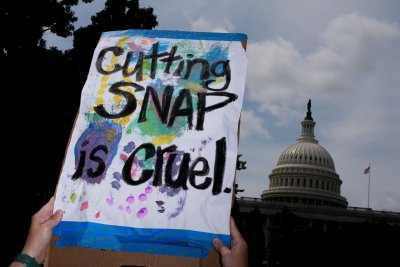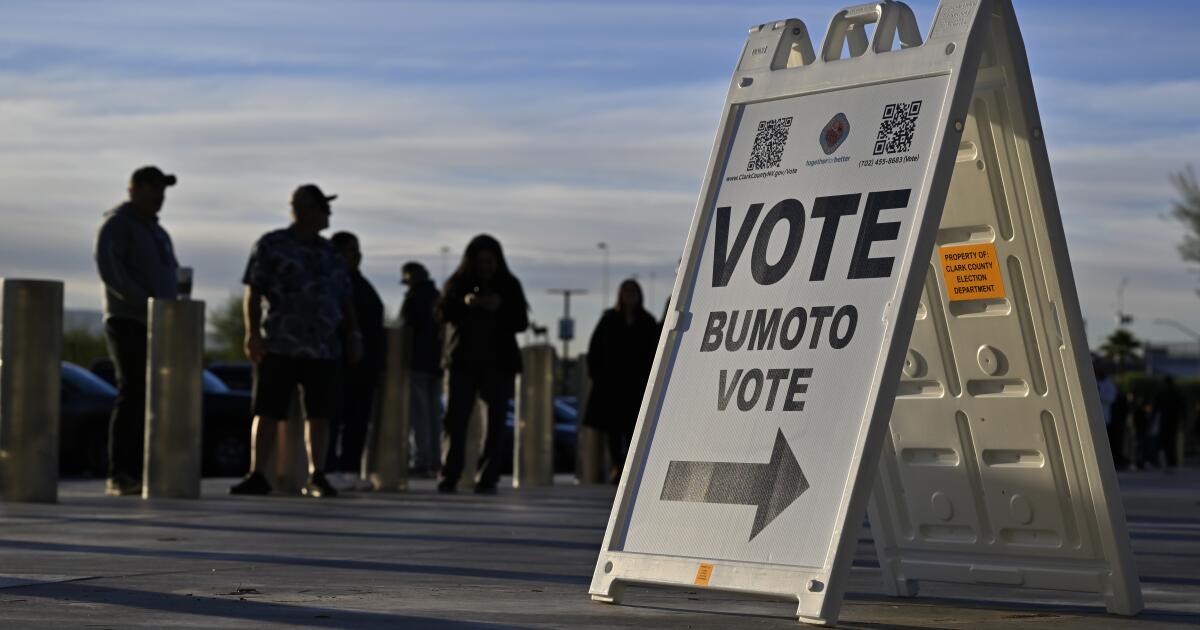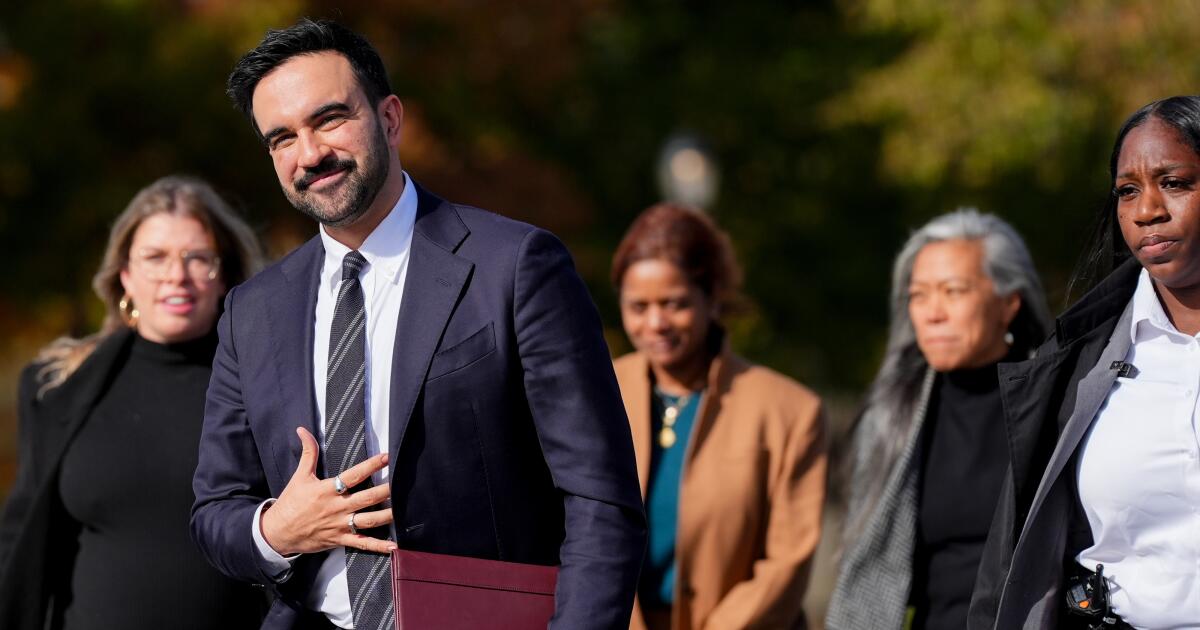Release the Epstein files, then get rid of the ‘Epstein class’
We are being ruled by the “Epstein class,” and voters deserve to know the details of that particular scandal, and to be able to expect better of their leaders in the larger sense.
That’s the message we’ll be hearing a lot in the coming weeks and months now that Democrats have successfully moved forward their effort to release the full investigation into former President Trump buddy Jeffrey Epstein.
“When you take a step back, you have a country where an elite governing class has gotten away with impunity, and shafted the working class in this country, shafted factory towns, shafted rural communities,” Rep. Ro Khanna (D-Fremont) told me Wednesday.
He represents parts of Silicon Valley and is one of the authors of the House push to release the full government investigation into Epstein. But in the Epstein case, he also sees an opportunity to reach voters with a larger promise of change.
“What Epstein is about is saying, ‘we reject the Epstein class governing America today,’” Khanna said.
How appropriately strange for these days would it be if Epstein, who faced sex trafficking charges at the time of his death, provided the uniting message Democrats have been searching for?
“Epstein and economics” sounds like a stretch on the surface, but it is increasingly clear that Americans of all political stripes are tired of the rich getting richer, and bolder. The Epstein files are the bipartisan embodiment of that discontent.
Rep. Ro Khanna (D-Fremont), left, and Rep. Robert Garcia (D-Long Beach) have led Democrats’ push for release of the Epstein files.
(Sue Ogrocki and J. Scott Applewhite / Associated Press)
Our collective frustration with what can appear only as a cover-up to benefit the wealthy and powerful is an unexpected bit of glue that binds regular Americans, because the corruption and hubris of our oligarchy is increasingly undeniable and galling.
Whether it’s our president’s obviously wrong contention that grocery prices are down; our vice president being willing to take on the pope about true Catholic doctrine; or our FBI chief flying his girlfriend around on the taxpayer dime, the arrogance is stunning.
But where each of those examples becomes buried and dismissed in partisan politics, sex trafficking girls turns out to be frowned upon by people from all walks of life.
“It’s universal,” said Rep. Robert Garcia (D-Long Beach), the ranking Democrat on the House Oversight Committee, and another Californian. “This is clearly a White House and a president that is the most corrupt person we’ve ever had in office serving as a chief executive, and this is just another piece of that corruption.”
Khanna, along with Republican Rep. Thomas Massie of Kentucky, built the unlikely but unstoppable effort that brought together once-loyal Trumpers including Reps. Lauren Boebert, Nancy Mace and Marjorie Taylor Greene with Democrats.
Those staunch right-wingers are tied in to their voters, and probably understood just how unpopular sex trafficking is with a base that grew into maturity on QAnon-inspired fear mongering about kidnapped children.
“It’s the only thing since Trump walked down the escalator that’s been a truly bipartisan effort to expose corruption and where there’s been a break in his coalition,” Khanna said.
And by “exposing rich and powerful people who abuse the system and calling them out clearly, we start to rebuild trust with the American people,” Khanna argues, the trust required to make folks believe Democrats aren’t so terrible.
Long before he was a linchpin in the Epstein saga, Khanna built a name as a force on the progressive left for a positive and inclusive economic platform that resembles the New Deal, which Franklin Delano Roosevelt used to rebuild democracy in another era of hardship and discontent.
It’s all about real payoffs for average Americans — trade schools and affordable child care and jobs that actually pay the bills. That’s the message that he hopes will be the top line as Democrats push forward.
On Wednesday, the buildup of resentment that might make that possible came into full focus in Washington, as Congress opened up to anything but business as usual. Democrats, led by Garcia, released emails raising questions about Trump’s knowledge of Epstein’s crimes.
Trump “spent hours at my house” and “knew about the girls,” Epstein wrote, even as Trump’s press secretary argued this was all a “fake narrative to smear” her boss.
Republicans countered the emails with a massive information dump probably meant to obscure and confuse. But House Speaker Mike Johnson, out of excuses, finally swore in Rep. Adelita Grijalva (D-Ariz.), who promptly provided the final signature on the discharge petition to call a House vote on releasing the entire Epstein files.
That happened just hours after Boebert, one of the key Republican backers of that effort, was called to the White House in a last-minute, heavy-handed bid to pressure her into dropping her name from the demand. She did not.
Enough to make your head spin, honestly. About 10 more dastardly, intriguing and unexpected things happened, but you get the gist: President Trump really, really does not want us to read the Epstein files. House Democrats are ready to fight the long fight.
Garcia said House Democrats aren’t caving, because the cover-up keeps growing.
“There’s a lot of folks now that are obsessed with hiding the truth from the public, and the American public needs to know,” he said. “The Oversight Committee is committed to fighting our way to the truth.”
But it will be a long fight, and one with only a slim chance of winning the release of the files. Any effort would have to clear the Republican-held Senate (and after the shutdown collapse, who knows if Senate Democrats have the stomach for resistance), then be signed by Trump.
Judging from his near-desperate social media posting about the whole thing being a “hoax,” it’s hard to imagine him putting his scrawl on that law.
But unlike the shutdown, the longer this goes, the more Democrats have to gain. People aren’t going to suddenly start liking pedophiles. And the more Trump pushes to hide whatever the truth is, the more Democrats have the high ground, to message on corruption, oligarchs and even a vision for a better way.
“Epstein and economics” — linking the concrete with the esoteric, the problem with the solution.
The bipartisan message Democrats didn’t know they needed, from the strangest of sources.



























